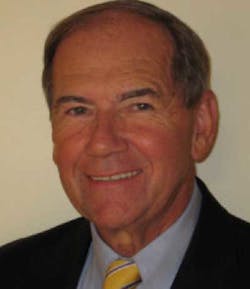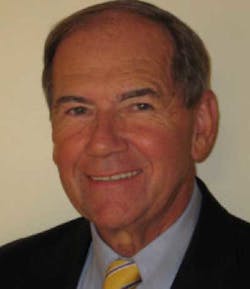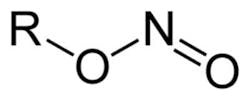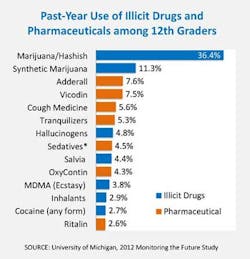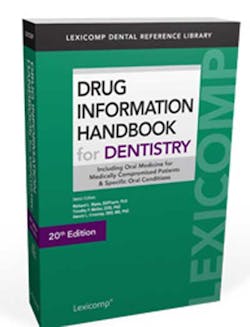Street drugs exposed: What your kids and your patients are not telling you
I attended a wonderful, informative, and humorous presentation at RDH Under One Roof 2014 by Harold L. Crossley, DDS, MS, PhD. If you ever have an opportunity to hear and see Dr. Crossley, go for it!
Dr. Crossley told us that chemical dependency is a primary, chronic, progressive, and relapsing disease with genetic, psychosocial, and environmental factors influencing its development and manifestations. The term chemical dependency is also defined as a primary illness or disease that is characterized by addiction to a mood-altering chemical. Chemical dependency includes both drug addiction and alcoholism. A chemically dependent person is powerless to discontinue drinking or taking a particular mood-altering chemical despite serious health, economic, vocational, legal, spiritual, and social consequences. It is a disease that affects both sexes and all ages, races, religions, and income levels. It is progressive and chronic, and if left untreated it can be fatal.(4) We are advised to take a thorough medical history on all patients.
There are age-related trends regarding drugs.(5) Adolescents tend to use inhalants, or volatile solvents. They are the fifth most abused drugs after alcohol, marijuana, nicotine, and prescription drugs, and use peaks in eighth grade.(5) They are used by “huffing," “sniffing,” and “bagging,” and include model paints (especially gold and silver), Magic Markers, correction fluid, and aerosol keyboard cleaners.
Causes of death from these drugs may include suffocation, respiratory depression, hepatotoxicity, and sudden sniffing death. Sudden Sniffing Death Syndrome (SSDS) is heart failure resulting from an irregular heartbeat, usually caused by stress or strenuous activity after using inhalants.(6) Other types of inhalants include amyl nitrite, butyl nitrite, isopropyl nitrite, and isobutyl nitrite (poppers, snappers, Bolt, Rush). Nitrous oxide, sometimes from whippets, is also abused. Whippets are small canisters that contain pressurized nitrous oxide, such as for whipped cream.
The classes of prescription drugs most frequently abused are opioid pain relievers such as Vicodin or OxyContin, stimulants for treating Attention Deficit Hyperactivity Disorder (ADHD) such as Adderall, Concerta, or Ritalin, and central nervous system (CNS) depressants for relieving anxiety such as Valium or Xanax.(7) The most commonly abused OTC drugs are cough and cold remedies containing dextromethorphan.(5)
Dr. Crossley told us about street/prescription drug combinations.(5) These include cheese (heroin + diphenhydramine), lean (syrup, pink, purple drank), codeine + promethazine; parachuting (rolling a drug/pill in paper), such as alprazolam + ecstasy; spice or K2, which refers to a wide variety of herbal mixtures that produce experiences similar to marijuana (cannabis), and that are marketed as "safe," legal alternatives to that drug; Holy Trinity, oxycodone, carisoprodol (Soma), and alprazolam (Xanax); bath salts, stimulants (uppers); hand sanitizers – alcohol; jimson weed (locoweed, thornapple, datura); and salvia (catnip, mint, and more).
Datura stramonium, known by the common names jimson weed, devil's snare, or datura, is a plant in the Solanaceae family.
Possible oral manifestations of substance abuse are nicotine stomatitis, absence of stains on lingual of lower anterior teeth, spots or sores around the mouth, burns on lips, leukoplakia, meth mouth, unexplained periodontitis, unusual amount and location of caries, and xerostomia.(5)
Resources
Useful Websites for drug information (5)
• drugfree.org
• dea.gov
• drugabuse.gov
• nida.nih.gov
• streetdrugs.org
• drugs.com
Most recent (2014) book by Dr. Crossley (9)
* Editor’s note: Written with permission from Harold L. Crossley, DDS, MS, PhD
References
1. http://www.ada.org/en/about-the-ada/ada-positions-policies-and-statements/provision-of-dental-treatment-for-patients-with-substance-abuse.
2. http://www.ada.org/en/about-the-ada/ada-positions-policies-and-statements/guidelines-alcohol-nicotine-drug-use-children-adolescent-patients.
3. http://www.ada.org/en/about-the-ada/ada-positions-policies-and-statements/alcohol-and-substance-use-by-pregnant-postpartum-patients.
4. http://www.draonline.org/chemical_dependency.html.
5. Crossley, HL DDS. Street Drugs Exposed: What Your Kids And Your Patients Are Not Telling You! RDH under One Roof, Chicago, IL. August 14, 2014.
6. http://www.drugabuse.ca/sudden-sniffing-death-syndrome-ssds.
7. http://www.drugabuse.gov/publications/drugfacts/prescription-over-counter-medications.
8. file:///C:/Users/mgold_000/Downloads/att_80086_EN_Spice%20Thematic%20paper%20%E2%80%94%20final%20version.pdf.
9. http://webstore.lexi.com/Drug-Information-Handbook-for-Dentistry.
